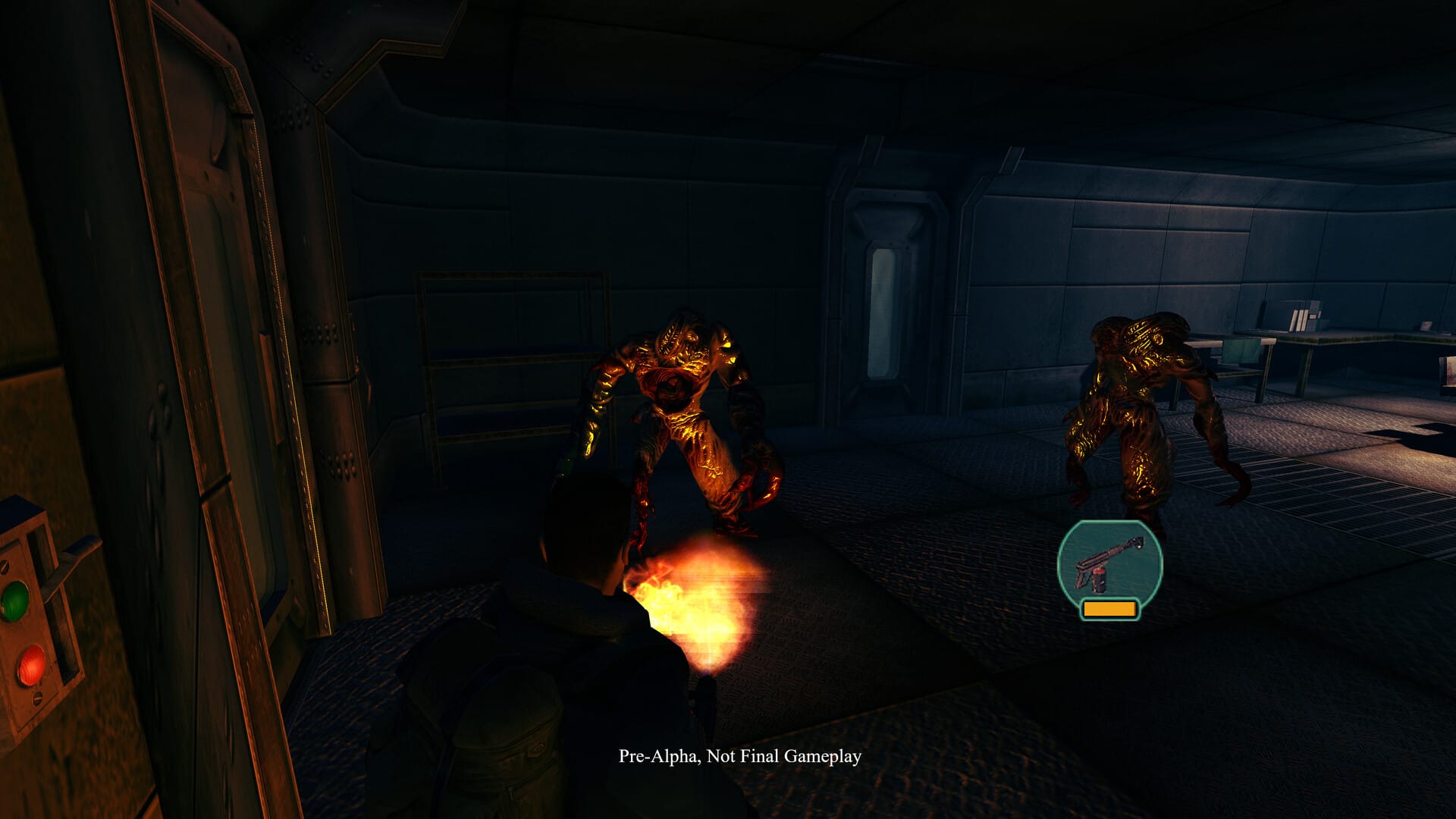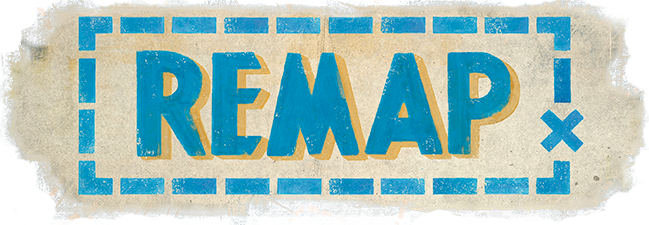Towards the end of Waypoint, we started and (eventually) finished an ambitious 101 project, where everyone on staff (plus joyous gamer and Immortality producer Natalie Watson) proposed a different video game for us all to play, dissect, and understand over the next year.
My pick was 2002’s The Thing.
I’d never played this survival horror take on John Carpenter’s masterpiece, but I'd heard a lot about it. It's known almost as much for what it doesn’t accomplish as much as what it does. It’s an ambitious work, and I call it a misfire not out of dismissal, as The Thing is very much deserving of respect. As I outlined in an essay from 2022 on the experience: The Thing is an empty promise worth playing.
The Thing attempted to turn the delicious premise of Carpenter’s film, in which an alien is able to successfully hide amongst a crew of Antarctic researchers, into a video game. A game that chose an easier path towards success would’ve made the experience entirely scripted, where every surprise was, like the movie, pre-planned. But the game wants far more, introducing all sorts of half-broken systemic elements where, in theory, a friend can become an enemy—a thing—at any time. Sometimes, it works. Oftentimes, it doesn’t. Every time, it’s really cool.
Here’s what I said in that 2022 piece:
“Revisiting older games without baked-in nostalgia is already a difficult proposition, because without the fuzzy positive memories, it’s extremely difficult to situate yourself in the context the game was released in and fully appreciate what it was trying to do at that point in history. Playing games from the past requires a deft hand, because so much of video game design is specifically iterating on the past, often making it hard to fully appreciate what came before.
The Thing had some radically cool and inventive ideas, even if didn’t know what to do with them. Perhaps the coolest takeaway from having played it is realizing that, even today, not many games are trying to do what The Thing attempted. It’s still exciting.”
It’s a game that deserved a sequel, and for a minute, they were developing one. While The Thing 2 never happened, we’re getting a wonderful consolation prize, as Nightdive Studios, the gold standard for remasters, is turning its attention towards The Thing. Hell yes.
I recently had an opportunity to ask some of the folks working on The Thing remaster at Nightdive, as I was especially curious whether they’ll try and touch up some of the elements of the game that were clearly supposed to work differently than how they function in the game.
What follows is a short chat with Larry Kuperman, director of business development at Nightdive, and Joel Welsh, art lead at Nightdive who’s worked on the recent Turok 3: Shadow of Oblivion remaster, alongside Star Wars: Dark Forces, System Shock 2, Killing Time, and others.
If you’re interested in learning more, I highly recommend checking out Nightdive’s YouTube channel, as they’re doing some fantastic ongoing dives into their work and the original works.

Remap: I suspect Nightdive is used to working on games with missing source code, broken code, messed up assets, etc. What state was/is The Thing in, when you decided to move forward with the project, and how did it compare to some of Nightdive’s other projects?
Larry Kuperman: We had two major advantages for this project. We began with a repository of the source code, a huge advantage. And then we were fortunate enough to have run into two of the members of the Computer Artworks team, the original developers of the 2002 version. That gave us access to a tremendous amount of assets, most in high-resolution format.
Joel Welsh: I’ll echo what Larry said. Compared to games like Turok 3, we were extremely fortunate in this case, not to mention we had about a year of prep time.
When I replayed The Thing a few years back, I wrote an essay about the experience that described the game as “an empty promise worth playing.” I meant that in the most complimentary way possible, because it’s such a uniquely flawed experience. Did you play the game when it was originally released? If so, what did you make of it at the time?
Joel: I played it at release. Looking back, that was over 20 years ago… One memory that comes to mind is the Rupture boss in the underground crate room right before you enter the submersible. It’s kind of a mixed bag, but I really enjoyed it, flaws and all. Working on the remaster has been a dream come true.
Building on the same point, a huge part of what doesn’t work in The Thing feels like a team that ran out of time. The answers are in the game, but it just doesn’t function exactly the way it’s supposed to. See: the enemy AI, thing transformations. How do you balance trying to go in and “fix” some of these elements, while training to maintain what made the game eccentric and interesting in the first place?
Joel: Assuming you mean the blood test, we’re working to resolve it, along with some of the other so-called faults of the original. By all accounts, Computer Artworks created the game they set out to make.
How much of this project is a collaboration with the original developers? And how often is that an aim for Nightdive projects?
Joel: In this case, we’re working closely with Ron Ashtiani and Mark Atkinson. Stephen and Larry made that happen. I knew Ron prior to joining Nightdive and his insight on art direction has been invaluable.
As an aside, his work on Guardians of the Galaxy was quite good. On the other hand, Mark wrote the code for his first game at 11, graduated from University at 16, and built the framework for The Thing, along with several other systems for Computer Artworks almost single-handedly. The man is a genius. Nothing gets past their scrutiny, and we’re really enjoying the collaboration.
To your second point, it’s important that we reach out to members of the original team whenever possible. For instance, we collaborated with Nelson Everhart for the remastered soundtrack of Turok 3, and Mike Lavine and Justin Chin helped with Star Wars. As Larry puts it, “We don’t know better than the original developers.” Words of wisdom.
The Thing was a very hard game, partially because it was hard to parse and partially because it felt a little broken. What’s the fine line between trying to maintain that sense of danger and strangeness, versus ensuring a modern audience has a good time with it?
Larry: We’re currently investigating ways to address difficulty and make other quality-of-life improvements. I think you’ll be pleasantly surprised.
Is the concept of a “remaster” becoming blurrier for you? Remaster, remake, reimagining. At one point, it felt like a “remaster” was merely getting a game to run on a modern platform. These days, there’s more and more work going in to tweaking and updating these games.
Joel: I dare say the opposite; the concept of what a Nightdive remaster should be is becoming clearer with every release. Stephen Kick has a vision for the company—bringing lost and forgotten gaming treasures back from the depths. I would compare Nightdive titles to Special Edition DVDs of yesteryears—higher quality presentation with extra features and bonus content. Merely getting a game to run on modern platforms with original assets, as you put it, is more of a port. We still do those—PO’ed is a recent example. It varies case-by-case, and what our partners expect when entrusting us with their IPs. For The Thing: Remastered, Universal has been incredibly supportive.
